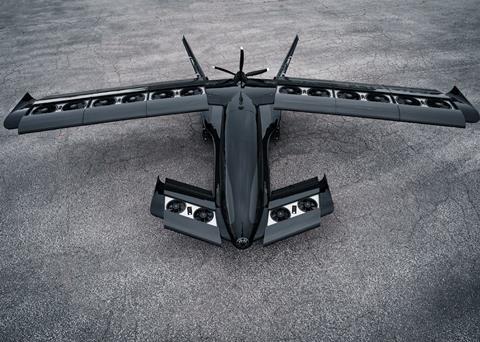Canadian hybrid-electric air taxi developer Horizon Aircraft has assembled a five-member board of directors that will oversee the company following its combination with Pono Capital Three and subsequent listing on the US stock exchange.
The board will be led by Horizon’s founder and chief executive Brandon Robinson, a retired fighter pilot, the company said on 3 January.
Jason O’Neill will work as chief operating officer and board director, bringing “more than 20 years of senior leadership” to the roles, Horizon says. Meanwhile, Trisha Nomura, John Maris and John Pinsent will each work as independent directors for the Ontario-based start-up.

Nomura is a sitting member of Pono’s board, while Maris is chief executive officer of Advanced Aerospace Solutions and a test pilot for NASA’s Traffic Aware Strategic Aircrew Requests cockpit automation technology.
Pinsent has an accounting background and is a board member for Enterprise Group, a Canadian company that provides specialised equipment for the energy, pipeline and construction industries.
”Each member brings distinct operating skills that will help us execute sharply as we move into 2024,” Robinson says.
The appointments will be effective upon finalisation of Horizon’s combination with Pono, which is expected to close this month. The deal calls for Horizon’s parent Robinson Aircraft to merge with already-public Pono, a so-called special-purpose acquisition company based in Hawaii. Such companies are focused solely on merging with promising start-ups and bringing them public.
Horizon indicated in August that it was pursuing plans to go public, which the company says will better position it to pursue certification of its piloted, six-passenger Cavorite X7. The air taxi is targeted for type certification in 2026 or 2027.
The aircraft will be powered by a hybrid-electric propulsion package, with the electrical system providing lift during take-off and landing and jet fuel powering forward flight.
“There is only enough battery power on board to enable the vertical take-off, and the rest of the time it is a normal airplane burning sustainable aviation fuel or kerosene jet fuel, which is 20 times more energy-dense than even the best batteries,” Robinson told FlightGlobal during the Paris air show last June.


























